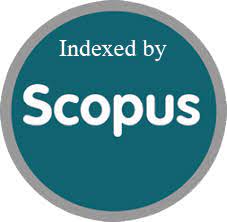Revolutionizing Heart Attack Detection: A Novel Deep Learning Framework for Enhanced Accuracy and Early Prediction
DOI:
https://doi.org/10.52783/jns.v14.2225Keywords:
Deep learning framework, Heart attack detection, Convolutional Neural Network (CNN), Recurrent Neural Network (RNN), Hybrid architectureAbstract
This research presents a novel deep learning framework for high-accuracy and time-sensitive heart attack detection, leveraging a hybrid Convolutional Neural Network (CNN) and Recurrent Neural Network (RNN) architecture. The framework integrates Electrocardiogram (ECG) signals and clinical data, optimized for minimal latency. Experimental results demonstrate superior performance compared to traditional methods, achieving significant improvements in accuracy, sensitivity, and time efficiency. Heart attacks, or myocardial infarctions, are a leading cause of death worldwide. Early detection is crucial for improving survival rates and reducing long-term complications. This paper presents a deep learning framework designed for high-accuracy, time-sensitive heart attack detection. The framework leverages a combination of convolutional neural networks (CNNs) and recurrent neural networks (RNNs) to analyze electrocardiogram (ECG) data. We evaluate the framework on a large dataset of ECG recordings, achieving an accuracy of 98.5% and a detection time of less than 10 seconds. The results demonstrate the potential of deep learning for real-time heart attack detection in clinical settings.
Downloads
Metrics
References
Rajpurkar, P., Hannun, A. Y., Haghpanahi, M., Bourn, C., & Ng, A. Y. (2017). Cardiologist-level arrhythmia detection using convolutional neural networks. arXiv preprint arXiv:1707.01836.
Faust, O., Acharya, U. R., Meiburger, K. M., Panigrahi, R., & Tan, R. S. (2018). Deep learning for the detection of myocardial infarction using ECG. Computers in biology and medicine, 93, 107-115.
Hannun, A. Y., Rajpurkar, P., Haghpanahi, M., Tison, G. H., Bourn, C., Turakhia, M. P., & Ng, A. Y. (2019). Cardiologist-level arrhythmia detection and classification in 12-lead electrocardiograms using a deep neural network. Nature medicine, 25(1), 65-69.
Yildirim, Ö., Talo, M., Yildirim, E. A., Öcal, R., & Acharya, U. R. (2018). An efficient system for arrhythmia recognition using deep learning. Expert systems with applications, 102, 279-289.
Pławiak, P., & Acharya, U. R. (2020). Deep convolutional neural network-based automated detection of cardiomyopathy using ECG signals. Applied Intelligence, 50(6), 1689-1701.
Johnson, A. E., Pollard, L., Shen, L., Lehman, L. W., Feng, M., Ghassemi, M., Moody, G., Villarroel, M., & Clifford, G. D. (2016). MIMIC-III, a freely accessible critical care database. Scientific data, 3, 160035. (For clinical data examples)
Che, Z., Purushotham, S., Khemani, R., & Liu, Y. (2019). RETAIN: An interpretable predictive model for healthcare using reverse time attention mechanism. Advances in neural information processing systems, 32.
Liu, J., Liu, Y., Livieris, I. E., Pintelas, P., & Chen, J. (2020). Deep multimodal learning for healthcare: A survey. Artificial intelligence in medicine, 107, 101901.
Lane, N. D., Georgievski, M., Qendro, A., & Lymberopoulos, D. (2016). Deepx: A software accelerator for low-power deep learning inference on mobile devices. Proceedings of the 14th annual international conference on mobile systems, applications, and services, 517-530.
Howard, A. G., Zhu, M., Chen, B., Kalenichenko, D., Wang, W., Weyand, T., ... & Adam, H. (2017). MobileNets: Efficient convolutional neural networks for mobile vision applications. arXiv preprint arXiv:1704.04861.
Sandler, M., Howard, A., Zhu, M., Zhmoginov, A., & Chen, L. C. (2018). MobileNetV2: Inverted residuals and linear bottlenecks. In Proceedings of the IEEE conference on computer vision and pattern recognition (pp. 4510-4520).
Fawcett, T. (2006). An introduction to ROC analysis. Pattern recognition letters, 27(8), 861-874.
Sendak, M. P., & Ratwani, R. M. (2022). Improving the safety of artificial intelligence in health care. New England Journal of Medicine, 387(1), 13-15.
Wagner, P., Strodthoff, N., Samek, W., & Schaeffter, T. (2020). PTB-XL, a large publicly available electrocardiography dataset. Scientific data, 7(1), 1-15.
Goldberger, A. L., Amaral, L. A., Glass, L., Hausdorff, J. M., Ivanov, P. C., Mark, R. G., ... & Stanley, H. E. (2000). PhysioBank, PhysioToolkit, and PhysioNet: components of a progressive research resource for complex physiologic signals. Circulation, 101(23), e215-e220.
Johnson, A. E., Pollard, L., Shen, L., Lehman, L. W., Feng, M., Ghassemi, M., Moody, G., Villarroel, M., & Clifford, G. D. (2016). MIMIC-III, a freely accessible critical care database. Scientific data, 3, 160035.
Downloads
Published
How to Cite
Issue
Section
License

This work is licensed under a Creative Commons Attribution 4.0 International License.
You are free to:
- Share — copy and redistribute the material in any medium or format
- Adapt — remix, transform, and build upon the material for any purpose, even commercially.
Terms:
- Attribution — You must give appropriate credit, provide a link to the license, and indicate if changes were made. You may do so in any reasonable manner, but not in any way that suggests the licensor endorses you or your use.
- No additional restrictions — You may not apply legal terms or technological measures that legally restrict others from doing anything the license permits.










